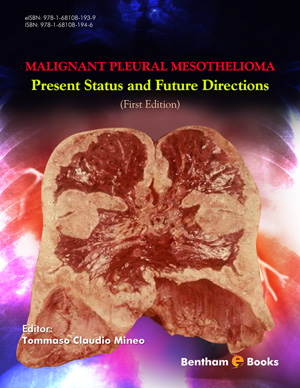Abstract
Malignant pleural mesothelioma (MPM) kills one person every four hours in the UK and every 12 hours in Australia. The global incidence of MPM continues to rise. MPM has no cure and symptom control is the key. Most MPM patients suffer from a pleural effusion; proficient care of malignant effusions and the associated breathlessness is essential to all MPM programs. MPM has unique characteristics in its pathobiology, clinical presentation and disease course that must be distinguished from those associated with metastatic cancers to the pleura. Recognizing these differences, e.g. the longer survival of MPM patients and higher risk of procedural tract metastases, are important. Patients with MPM-related pleural effusions are more likely to require definitive interventions for pleural fluid control, such as pleurodesis or indwelling pleural catheter (IPC) placement. One-third of MPM patients will fail talc pleurodesis, whether it is delivered by poudrage or slurry. IPC is well accepted as a treatment in patients with a trapped lung or when pleurodesis failed. Increasing evidence support the use of IPC instead of pleurodesis. However, effective use of IPC involves appropriate aftercare and optimal management of potential complications. Breathlessness in MPM is often multi-factorial; optimizing care of concurrent (non-effusion) causes of breathlessness is paramount. MPM cohorts are heterogeneous and disease courses can vary; only ~50% will require definitive therapies for pleural effusion management. Developing a personalized management plan based on predictions of survival, symptomatic response to pleural fluid drainage and effusion recurrence is the goal of contemporary research.
Keywords: Breathlessness, indwelling pleural catheter, malignant effusion, pleural, pleurodesis, procedure-tract metastasis, talc.






















